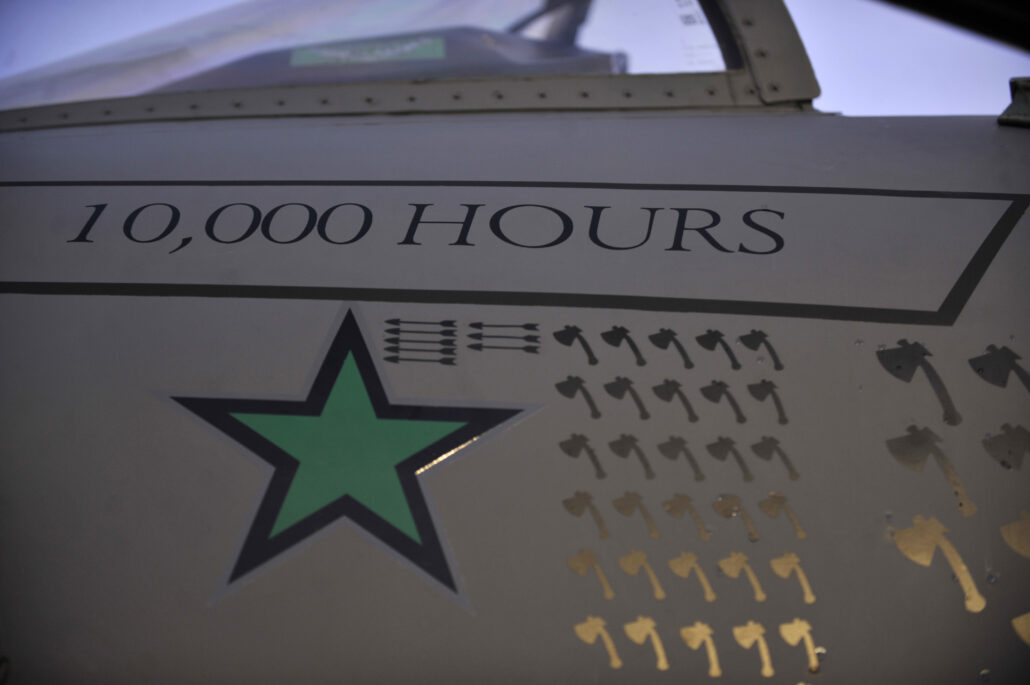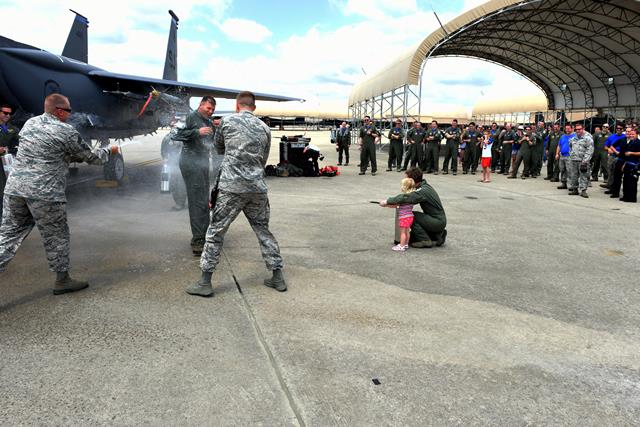By Senior Airman Dustin Mullen, 325th Fighter Wing Public Affairs / Published December 06, 2016
TYNDALL AIR FORCE BASE, Fla. — The 366th Fighter Wing from Mountain Home Air Force Base, Idaho, deployed 16 F-15E Strike Eagles and more than 300 Airmen to Tyndall AFB to participate in Checkered Flag 17-1 Dec. 5-16.

Checkered Flag is a large-force exercise that gives several legacy and fifth-generation aircraft the chance to practice combat training together in a deployed environment.
“While I have no doubt any two fighter squadrons in the Air Force could effectively integrate and succeed in combat operations; pre-deployment training, like Checkered Flag, makes us that much more lethal,” said Lt. Col. Joel Pauls, 391st Fighter Squadron commander.
To assist in augmenting the realism of the exercise, Mountain Home brought the 391st Fighter Squadron, known as the Bold Tigers. The 366th Fighter Wing lives by their motto of preparing mission-ready gunfighters to fight and win today’s war and the next.
“During the next two weeks we’ll get training opportunities we don’t get at home,” Pauls said. “These experiences will make us more combat capable.”
The F-15s play a large role in the success of Checkered Flag.
“We have [most of the current operational fighter models] in the Air Force participating in Checkered Flag, and we’ll get to plan, brief, execute and debrief with them. I think that’s when you really learn about integration,” Pauls said. “You never know when a crisis is going to erupt in the world and our nation will need us to be ready deal with it.”
The F-15E is a capable multi-role fighter, and the 300 Bold Tigers involved in the exercise are passionate about the mission, Pauls said. “Great Airmen are what make the F-15E so capable, and I’m lucky to be surrounded by them.”
The exercise also gives members of the 391st Aircraft Maintenance Squadron invaluable experience as they are forced to adapt to the stress of a deployed location, and still remain at top proficiency.
“We get the opportunity to work with, load and handle live munitions, which are inherently more dangerous,” said Master Sgt. Shannon Wadas, 391st AMXS lead production superintendent. “Here, we are training as if we were going to go to war. The bottom line is we are a warfighting operation, and the only way to train is to actually do, and we get to do here.”
In a simulated deployed environment like Checkered Flag, units must also deal with a new set of challenges.

“At the moment, we don’t have all of our jets and equipment, and we’re trying to fly an aggressive schedule while we’re here,” Pauls said. “Obviously this increases our risk to flying a bit. Having said that, we have an awesome operations and maintenance leadership team, and I have no doubt those leaders will find a way to maximize our training while we’re here.”
But even with those challenges, the 391st FS can count on familiar faces such as the 55th Fighter Squadron from Shaw AFB, South Carolina, to help maximize mission success.
“The 391st FS and 55th FS have been linked since Red Flag in July 2015,” Pauls said. “We deployed together from fall 2015 to spring 2016, flying [Operation Inherent Resolve] combat operations, and now we’re at Checkered Flag together. Before flying our first sorties here at Tyndall we already have a level of trust and familiarity.”
Members of Mountain Home are working toward extending that same level of trust and familiarity to all of the units here at Checkered Flag 17-1.









